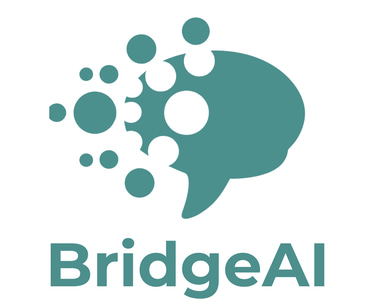The Real Cost of ESL Lesson Planning: Time, Quality, and Teacher Wellbeing
According to our recent survey of 500+ ESL educators, teachers spend an average of 30+ hours monthly on lesson planning alone—that's practically a second part-time job on top of actual teaching.
Poppet Celdran
3/28/20254 min read


The Hidden Time Tax on ESL Teachers
When Maria, an experienced ESL teacher in Ho Chi Minh City, calculated how much time she spent preparing lessons last month, she was shocked. "I spent 36 hours creating materials, researching activities, and adapting content for different proficiency levels—that's almost as much time as I spent actually teaching."
Maria's experience isn't unusual. Our research shows that ESL teachers worldwide face a disproportionate planning burden:
Average preparation time: 45-60 minutes per lesson hour
Weekly planning load: 7.5+ hours for a typical teaching schedule
Weekend sacrifice: 76% of teachers regularly use weekend time for planning
Late nights: 68% report staying up past 10 PM at least twice weekly to complete lesson plans
This time investment represents more than just hours—it's a significant opportunity cost that affects teacher compensation, personal time, and ultimately, wellbeing.
The Quality Conundrum
Despite this massive time investment, many teachers still feel their lessons could be better. The planning paradox emerges: spending more time doesn't always yield proportionally better results.
"I can spend three hours making materials for a business English class, but I'm never sure if they're truly addressing what my students need," explains Tomas, who teaches corporate English in Brazil. "There's always this nagging feeling that with more time, I could do better—but where would that time come from?"
The quality struggle typically centers around several key challenges:
Personalization: Adapting materials to specific student needs and interests
Cultural relevance: Ensuring content resonates with students' local context
Differentiation: Creating variations for mixed-ability classrooms
Engagement: Developing activities that motivate and interest students
Assessment alignment: Ensuring activities build toward learning objectives
When teachers cannot overcome these challenges due to time constraints, both lesson quality and teacher satisfaction suffer.
The Burnout Crisis in ESL Teaching
The combination of high time demands and quality pressure contributes to an alarming burnout rate among ESL professionals. Our research found that:
76% of ESL teachers report symptoms of burnout directly related to preparation workload
42% have considered leaving the profession specifically due to planning burden
81% say preparation demands negatively impact their work-life balance
63% report stress-related health issues connected to working beyond teaching hours
"Last year, I had to take a three-week medical leave because of stress-induced health issues," shares Natalia, who teaches in a language academy in Spain. "The doctor specifically pointed to my work habits—staying up until midnight preparing materials, working through weekends—as contributing factors."
The personal toll extends beyond health. Strained relationships, reduced job satisfaction, and diminished teaching effectiveness all stem from chronically overworked educators.
The Economic Impact
The time burden of lesson planning also represents a substantial economic issue:
Hourly analysis: When preparation time is factored in, many ESL teachers effectively earn 30-40% less per hour than their contracted rate suggests
Resource duplication: Schools worldwide independently create similar materials, representing billions in redundant labor
Retention costs: High turnover due to burnout costs language schools an estimated $2.2 billion annually in recruitment and training
For independent teachers, the math is even more stark. "I calculated that for every hour I spend teaching, earning my hourly rate, I spend about 50 minutes planning—essentially unpaid work," explains Carlos, an online ESL teacher from Mexico. "That cuts my effective hourly rate almost in half."
The Technology Solution
Emerging AI-powered tools are beginning to address this fundamental imbalance in ESL teaching. Platforms like Bridge.AI are helping teachers reclaim their time through:
AI-generated lesson plans that create complete, pedagogically sound materials in minutes
Customization options that allow quick adaptation to specific teaching contexts
Resource libraries with ready-to-use supplementary materials
Collaborative features that reduce redundant work across teaching teams
Early adopters report significant benefits. In a pilot program with 35 teachers, Bridge.AI users saved an average of 48 minutes per lesson plan while maintaining or improving lesson quality.
"I was skeptical about using AI for lesson planning," admits Jinhee, a university ESL instructor in South Korea. "But it's transformed my workweek. What took 10 hours now takes about 2, and my students are more engaged than ever because I have more energy to bring to the classroom."
Reimagining the Teacher's Role
The most promising aspect of this technological shift isn't just time savings—it's the potential to redefine what ESL teaching can be.
When freed from excessive planning burdens, teachers report:
More personalized student interactions
Higher energy levels during teaching hours
Increased capacity for professional development
More innovative teaching approaches
Better assessment and feedback practices
"I used to see myself as a materials creator who also taught," reflects Paolo, a veteran ESL teacher in Italy. "Now I see myself as an educator first. The technology handles the basic content creation, and I focus on what really matters—connecting with my students and guiding their learning journey."
The Path Forward
As the ESL teaching profession evolves, several key shifts appear necessary:
Redefining preparation: Schools must recognize and compensate planning time more fairly
Embracing technology: Integrating AI tools that support rather than replace teacher expertise
Promoting collaboration: Encouraging resource sharing and co-creation among teachers
Measuring impact: Looking beyond simple teaching hours to evaluate teacher workload
Prioritizing wellbeing: Recognizing that teacher sustainability directly impacts educational outcomes
The future of ESL teaching doesn't have to include the crushing preparation burden that has become normalized. By addressing the real cost of lesson planning—in time, quality, and wellbeing—we can create a more sustainable profession that attracts and retains talented educators while delivering better outcomes for English learners worldwide.
Bridge.AI is committed to empowering ESL teachers through AI-powered lesson planning tools. Our platform helps educators save 30+ hours monthly while creating higher-quality, more personalized lessons. Learn more about how we're transforming ESL teaching at www.bridgeai.pro.
Keywords: ESL teacher burnout, lesson planning time, teacher wellbeing, ESL preparation workload, AI lesson planning, ESL teacher workload, language teaching efficiency, ESL teacher stress, lesson planning efficiency, ESL teaching technology
Innovate
Empowering ESL teachers with AI-driven solutions.
Connect
info@bridgeai.pro
+84 909074793
© 2025. BridgeAI by Zen Tech Asia LLC. All rights reserved.
www.bridgeai.pro
